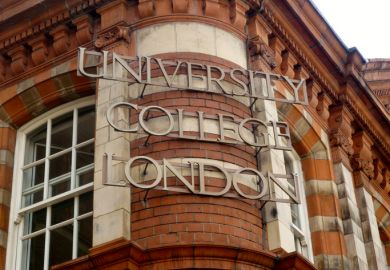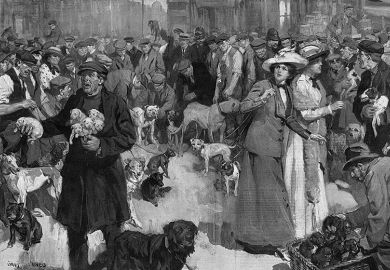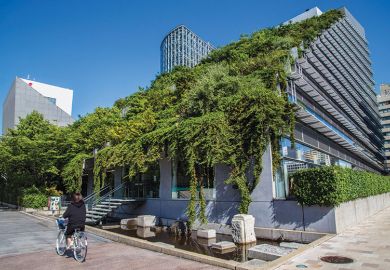There seems to have been a surge of interest in more recent architectural history in Britain, and Alan Powers's Serge Chermayeff and Nigel Whiteley's Reyner Banham help to fill large gaps in our knowledge of the area. Both books dwell on the ways in which two men could hold a powerful influence over the development of architecture's own self-image, while producing little in the way of buildings themselves. The books thus join a growing collection of works devoted to those who played an important role in the development of architectural education, history and theory.
Chermayeff (1900-96) was a self-taught architect, but, apart from his work with Erich Mendelsohn on the De la Warr Pavilion in Bexhill-on-Sea, is perhaps best known for his work as a teacher and writer. His 1963 work, Community and Privacy , written with Christopher Alexander, remains a key text for those interested in the social organisation of space.
Powers's initial description of his encounter with Chermayeff in his latter years is disarming. He uses the introduction to let the reader know his particular stake in this history. There is no pretence at disinterestedness. Similarly, Whiteley confesses to being a "Banham enthusiast", having "survived" being examined by the critic at his PhD orals in 1982. This does not prevent him from taking a critical stance on his work, acknowledging that, while espousing a pluralist standpoint, Banham accepted "multiple aesthetics only within a range of technologically progressive options".
One of the great strengths of Powers's book is his ability to describe and analyse buildings that have never before received such treatment. Of particular interest are his descriptions of modernist landscapes, for example that of Chermayeff's home, Bentley Wood. Powers is not afraid to acknowledge his difficulties in gaining information on certain events and buildings, giving us greater faith that the information he does give us comes from legitimate sources.
In reading Powers's account of the early period of Chermayeff's work, it is difficult to gain a sense of the architect's theoretical point of view, the extent and source of his ideas. Later in life Chermayeff was to become an avid painter, occasionally making copies of works by artists he admired such as Picasso. A few colour images of his paintings are included in the book. I only regret that these receive no extensive analysis.
The biographical and the theoretical are elegantly joined in Powers's version of Chermayeff's life, beginning with an account of his childhood and youth in Chechnya and his early career as a dancer. Powers believes that personal events have a concomitant effect on his subject's professional life.
Whiteley, by contrast, describes his work as an "intellectual biography", thus largely severing Banham's thoughts from their source - events in his daily life. These are summarised briefly at the beginning of the book. This seems particularly strange given that "history for Banham was not something 'academic' - to use one of his most loaded terms - but alive and vital, and part of its vitality came from its human concerns and relationships". Whiteley seems to go to great lengths to avoid a chronological reading of Banham, devoting chapters to subjects such as "The mechanical sensibility" and "Science for kicks". Presumably this was done to avoid repetition, but if so it does not seem to have achieved its aim.
Banham (1922-88), a prolific writer, known for his work on popular culture and "high tech" was, perhaps surprisingly, a Courtauld-educated historian well versed in Erwin Panofksy's ideas about iconology. These two elements receiving perfect expression, for example, in his writings on the symbolism of radios aimed at the teenage market, in which he describes the use of the pull-out aerial as a "science fiction symbol", the use of the massive buckle as an "army-surplus symbol", the use of the clip-on component as a "special equipment symbol" and the use of black leather as a "virility symbol".
The book contains an interesting account of the workings of the Independent Group, active in London during the 1950s, and the ways in which its members have since mythologised its activities. Whiteley skilfully brings in ideas from other spheres to elaborate his own theory, for example he uses Johan Huizinga's idea of Homo ludens to explore Banham's concept of fun.
Le Corbusier, a key influence on Banham, is given original treatment by Whiteley, whose observations are clearly based on his own first-hand observations of Le Corbusier's own texts. He emphasises the strong influence of classical philosophy on the work of the architect, a view reinforced by Powers.
Whiteley is almost irritatingly politically correct, castigating Banham for his macho exclusion of females in his texts. While this is true (a fact apparent to any female undertaking architectural education in the 1970s and early 1980s when Banham's theories held great currency), for a man of his time this can be taken as read. If Whiteley was going to be consistent in criticising Banham using contemporary terms of reference, he should castigate him for his flagrantly unsustainable (in the green sense) approach to architecture, expressed through his love of expendability. This is something that, shockingly, Whiteley almost totally omits to do. In contrast, Powers highlights Chermayeff's role as one of the first to bring a discussion of "ecology" into the architectural studio.
Both books are well paced, easy to read, reasonably well laid out and contain a number of illustrations, thus rendering them accessible to undergraduates at an early level. Neither author is afraid to include an interesting anecdote where one is needed. I can sense Whiteley straining between a need to write in an academic and measured tone and a desire to fall into populist Banham speak, a tendency that one may or may not want to encourage in students. The Whiteley book has no index, making it difficult to use as a quick reference source. If Powers is to be faulted, it is for providing references to groups of people and names of organisations without giving explanations of who they are. A certain amount of basic knowledge of architectural history is therefore necessary fully to understand the text. With its extensive bibliography, index and chronology, it is, however, a useful resource for other researchers interested in the way in which European modernism filtered its way into Britain and the US.
Speaking as a teacher of architecture who wants students to develop an understanding of the ways in which different writers have created their own particular versions of architectural history, I shall find the Banham book particularly useful when read in conjunction with his key historical text, Theory and Design in the First Machine Age . Not only does Whiteley's text provide a critique of Banham, it also provides a critique of his PhD supervisor Nikolaus Pevsner and Banham's own tutee Charles Jencks, a formidable "apostolic succession" of architectural historians. Whiteley's work also helps us to situate the writings of Gavin Stamp and David Watkin, who still play significant roles in the current scene. As regards Chermayeff: Designer Architect Teacher , its importance and value will become more apparent as our understanding and esteem for modernism in Britain grow.
Flora Samuel is lecturer in architecture, Cardiff University.
Serge Chermayeff: Designer Architect Teacher
Author - Alan Powers
ISBN - 1 85946 075 5
Publisher - RIBA Publications
Price - £30.00
Pages - 298
Register to continue
Why register?
- Registration is free and only takes a moment
- Once registered, you can read 3 articles a month
- Sign up for our newsletter
Subscribe
Or subscribe for unlimited access to:
- Unlimited access to news, views, insights & reviews
- Digital editions
- Digital access to THE’s university and college rankings analysis
Already registered or a current subscriber? Login



